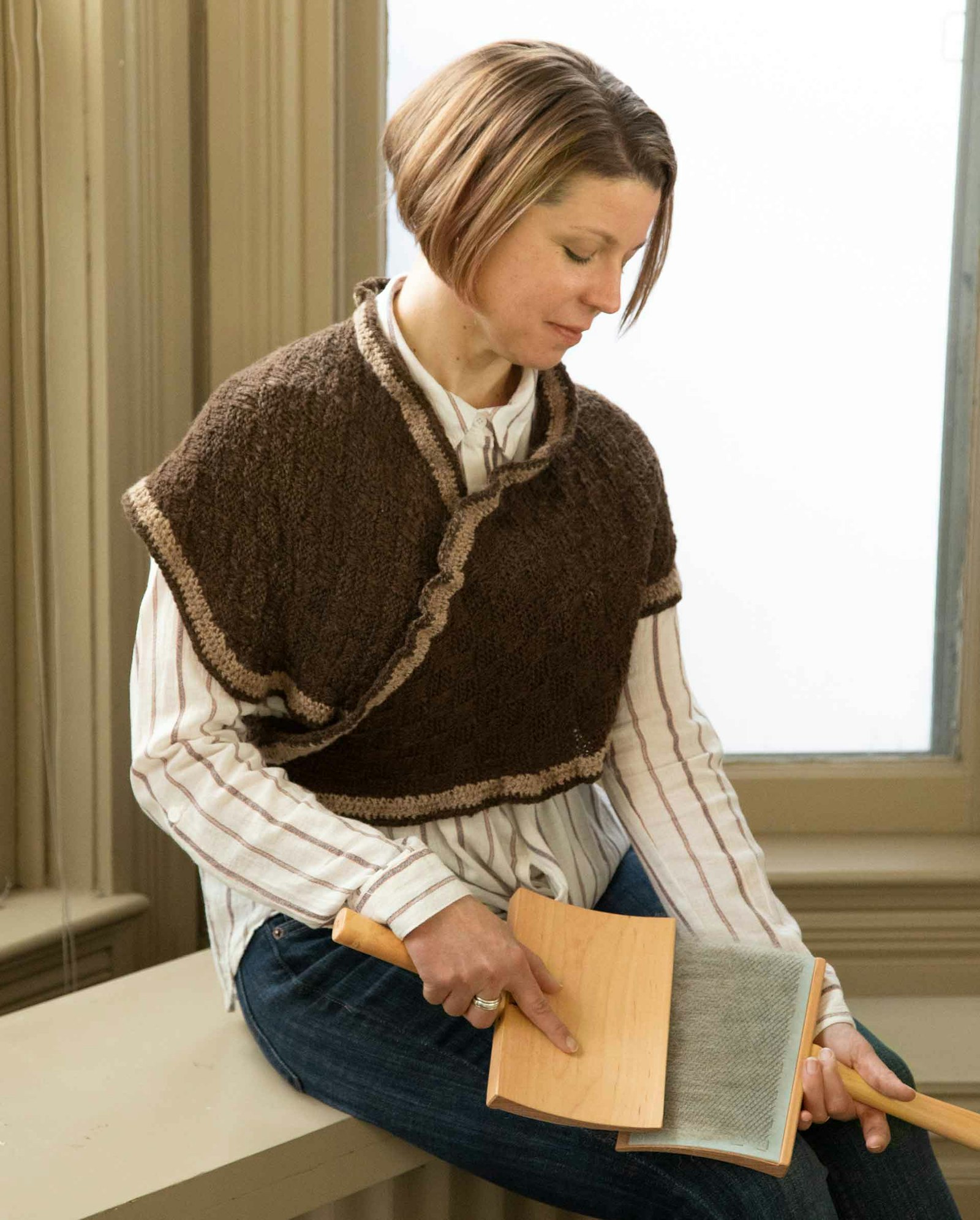Subscriber Exclusive
Godey’s-Inspired Sontag
A pattern originally published in Godey’s Lady’s Book in January 1860 inspired this cozy shawl from the Summer 2020 issue of Spin Off.
A pattern originally published in Godey’s Lady’s Book in January 1860 inspired this cozy shawl from the Summer 2020 issue of Spin Off. <a href="https://spinoffmagazine.com/godeys-inspired-sontag/">Continue reading.</a>
https://spinoffmagazine.com/cdn-cgi/image/format=auto/https://www.datocms-assets.com/75073/1656688611-godey-s-inspired-sontag-1.jpg?auto=format&w=900
A sontag, also known as a bosom buddy, habit shirt, or heart hugger, is a triangular shawl that comes over the shoulders, across the body, and then ties in the back and front. The term sontag is reported to come from the German opera singer Henriette Sontag, most popular slightly before and during the Civil War era.
The pattern that inspired me was originally published in Godey’s Lady’s Book in January 1860. Godey’s was a popular magazine for women published in Philadelphia from 1830 to 1898. Many issues of this long-out-of-print periodical have been digitized and are available online (see Resources).
SUBSCRIBER EXCLUSIVE
A sontag, also known as a bosom buddy, habit shirt, or heart hugger, is a triangular shawl that comes over the shoulders, across the body, and then ties in the back and front. The term sontag is reported to come from the German opera singer Henriette Sontag, most popular slightly before and during the Civil War era.
The pattern that inspired me was originally published in Godey’s Lady’s Book in January 1860. Godey’s was a popular magazine for women published in Philadelphia from 1830 to 1898. Many issues of this long-out-of-print periodical have been digitized and are available online (see Resources).
[PAYWALL]
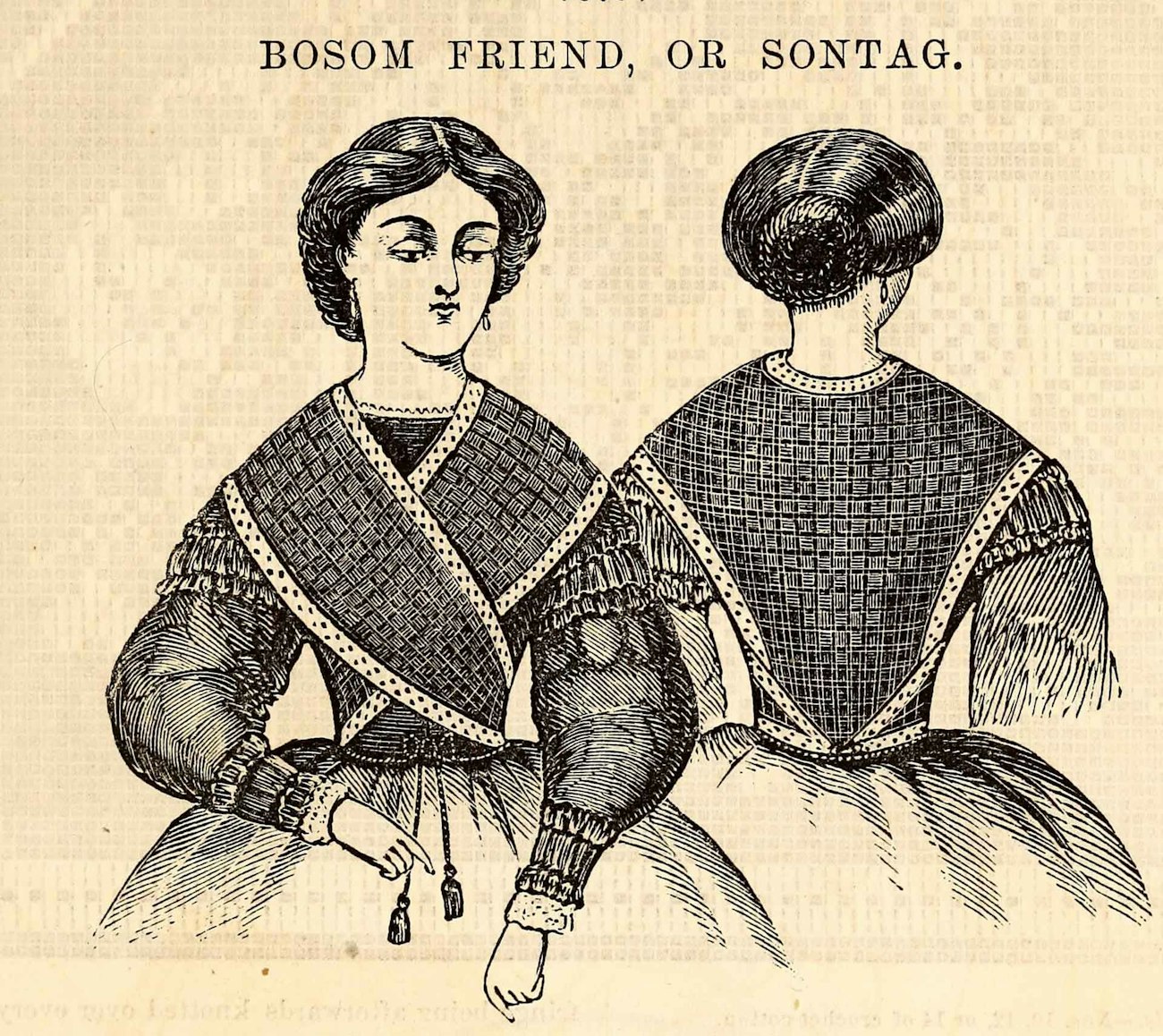
Illustration featured in Godey’s Lady's Book vol. 60 (1860). Photo courtesy of Indiana State Museum and Historic Sites
Spinning Notes
The original pattern calls for “three and a half ounces crimson double zephyr [yarn], two and a half ounces white, half an ounce black, small bone or wooden needles.” Zephyr yarn was a fingering-weight wool, commonly made as a branded Berlin wool from Merino sheep produced in Saxony, Germany. Double Zephyr can be estimated as sportweight or DK weight.
I purchased the raw Merino fleece for my sontag locally from Chaotic Farm in Medina, Ohio. I processed the washed locks by simply flicking the ends and spinning from the tip of each lock. I love a smooth yarn, so I spun it worsted and plied it.
My favorite wheel for this kind of spinning is a Schacht Ladybug. I used the super-high-speed whorl, which has a ratio of 14.5:1. My default draft is worsted with a short backward draw, and I usually spin Z-twist (right) singles and ply with S-twist (left). I also like to use a spinner’s control card, and I try to keep my singles as consistent as possible.
I plied the singles into two-ply yarns on the fast-speed whorl, which has a ratio of 10.5:1. The resulting plied yarns were 18 wraps per inch for the brown and 19 wraps per inch for the tan. The two colors of fleece were somewhat different in character, and this created some differences in the final yarns. The tan was a finer fiber with a softer hand. I found that I needed to add a bit more twist to this soft fiber when plying to produce the twist angle I wanted.
I plied about 609 yards of brown and 120 yards of tan for a total of 729 yards from 9.5 ounces of fiber. In terms of grist (yards per pound), this is about sport-weight. The pattern called for small needles; based on my size and fit, I used a pair of size 8 (5 mm) metal needles. I am a very tight knitter. I wanted the sontag to fit across my back at the natural waist (10"), across the entire width of my shoulders (16"), and up the length of my back without creeping (21"). You can adjust the finished size of the sontag by spinning finer or bulkier yarns or adjusting needle gauge.
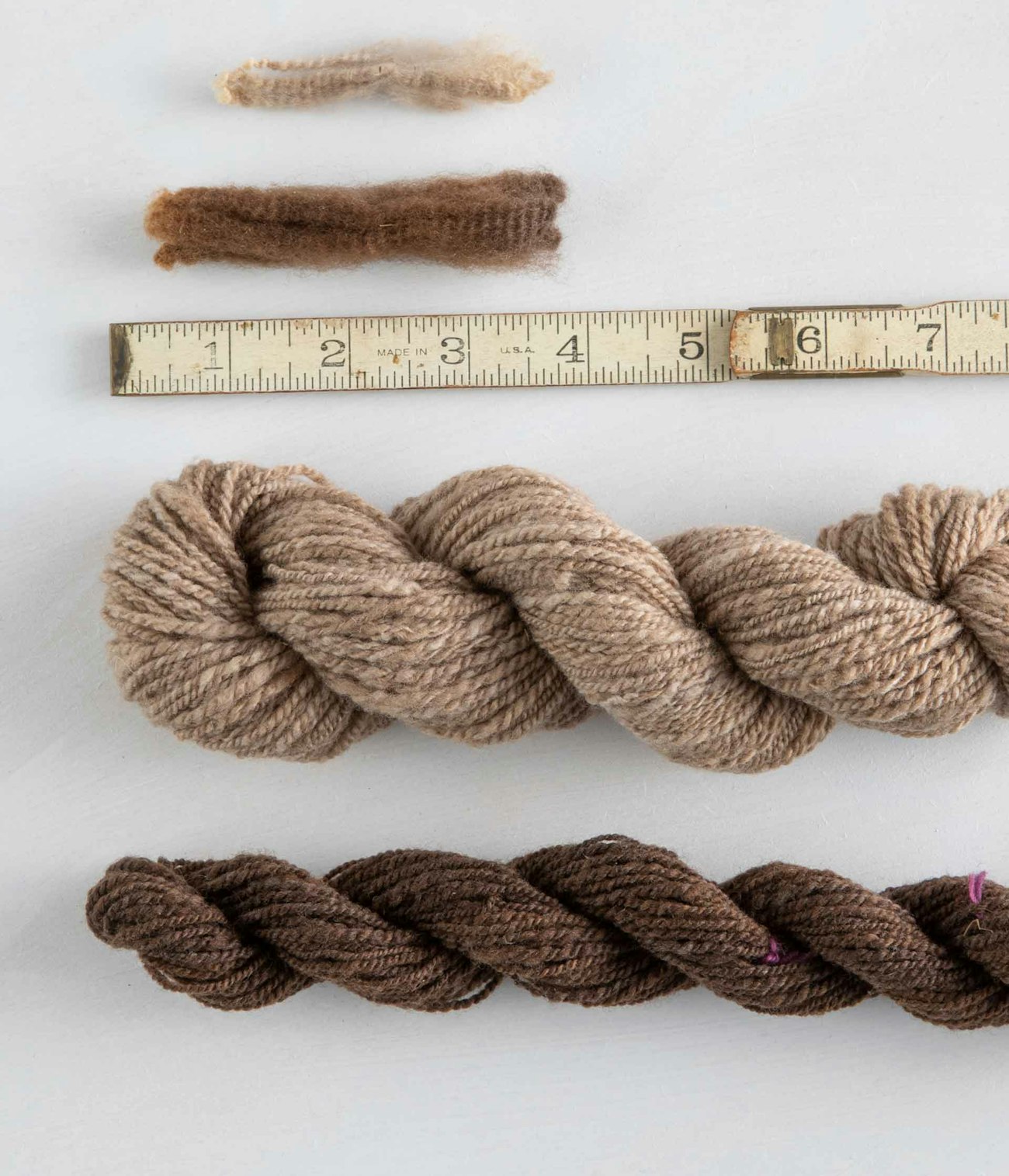
The staple length of the Merino locks was 2" to 3". For staple lengths such as this, Denise likes to flick the ends of the locks with handcards and spin from the tips.
Resources
Fiber from Chaotic Farm, Medina, Ohio, www.facebook.com/pg/chaoticfarm1
Godey’s Lady’s Book, Vol 60. Philadelphia: L. A. Godey, 1860. www.archive.org/details/godeysladysbook00phil
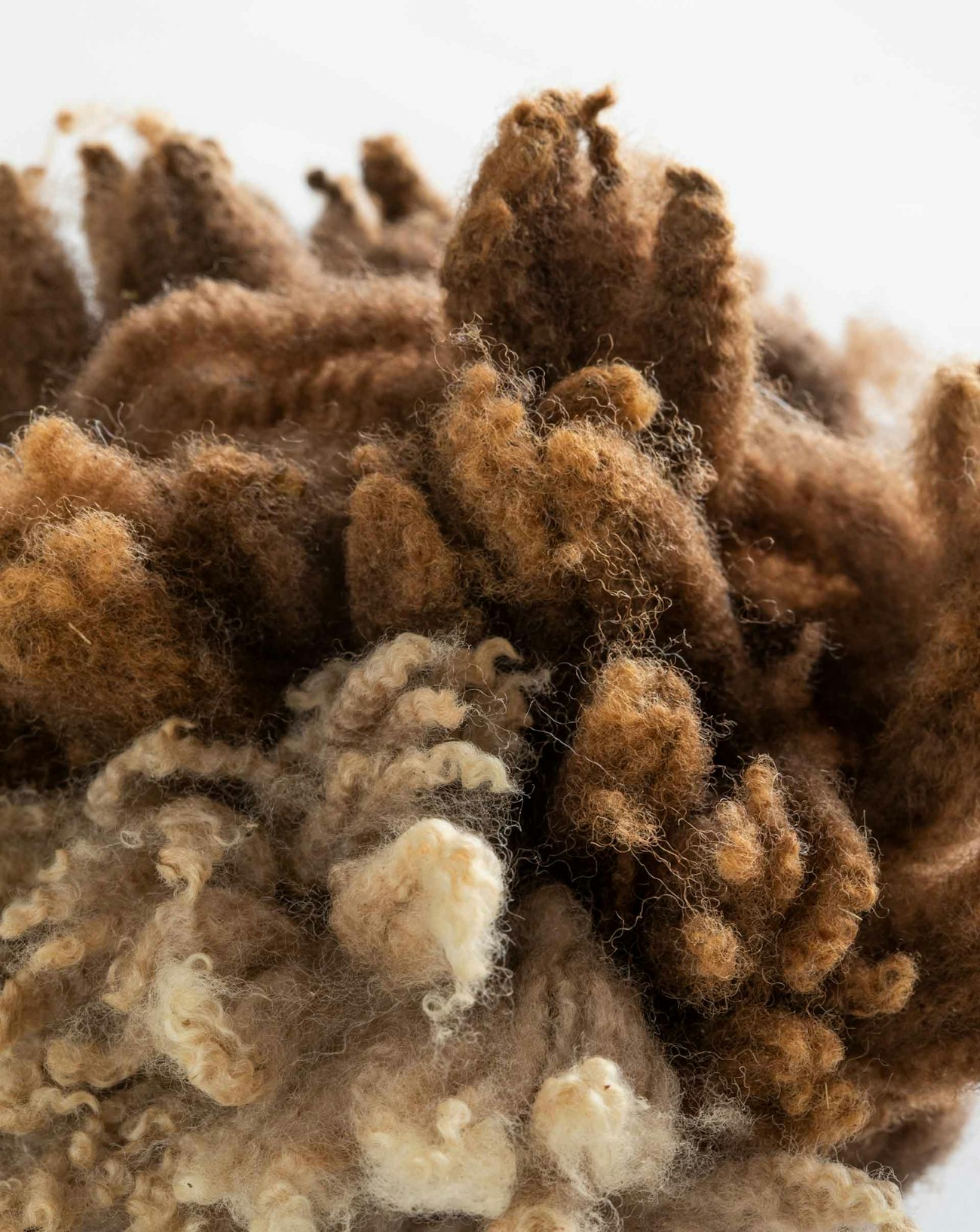
Fine, natural-color Merino from Chaotic Farm in Medina, Ohio.
Materials
Fiber 91/2 oz Merino wool.
Yarn 2-ply; 580 yd MC, 25 yd CC; 1,230 ypp; 18 wpi; sportweight.
Needles Size 8 (5 mm): 24" circular (cir). Adjust needle size if necessary to obtain the correct gauge.
Hook H/8 (5 mm). Adjust hook size if necessary.
Notions Stitch holder; tapestry needle.
Gauge 22 sts and 26 rows = 4" in Blocks patt.
Finished Size 28¼" shoulder width, 17½" back length, 17½" front length, excluding ties.
Visit www.spinoffmagazine.com/spin-off-abbreviations for terms you don’t know.
Notes
This shawl is worked from the lower back up to the shoulders, then stitches are bound off for the back neck and the fronts are worked separately from the shoulders down.
A circular needle is used to accommodate the large number of stitches.
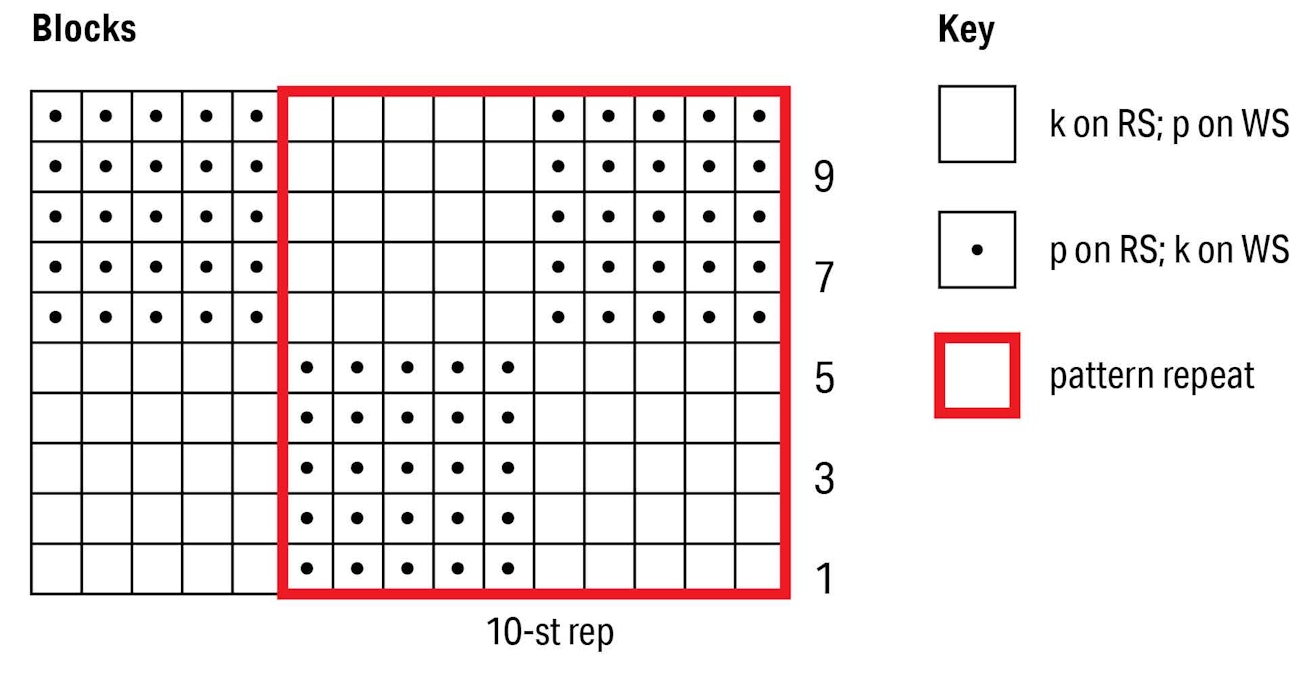
Sontag
With MC, CO 45 sts. Do not join.
Set-up row (RS) K1f&b, work Row 1 of Blocks chart (beg with 2nd st of chart)—46 sts.
Inc row K1f&b, work in patt to end—1 st inc’d.
Rep inc row every row 98 more times, working new sts into patt—145 sts; 20 rows of blocks, 29 blocks on last row.
Divide for neck
Next row (RS) Work 60 sts in patt and place these sts on holder for right front, BO 25 sts, work in patt to end—60 sts rem for left front.
Left front
Work 3 rows even in patt.
Dec row (RS) Ssk or ssp as needed to maintain patt, work in patt to end—1 st dec’d.
Rep dec row every 4th row 10 more times—49 sts rem; 9 blocks after neck BO.
Work 1 WS row.
Rep dec row on next row, then every RS row 24 more times—24 sts rem; 19 blocks after neck BO.
Dec row (WS) Work in patt to last 2 sts, ssk or ssp as needed to maintain patt—1 st dec’d.
Rep dec row every row 18 more times (working RS or WS dec row as needed)—5 sts rem.
Work 1 WS row—23 blocks after neck BO.
Tie
Work in garter st until piece measures 21" from last block. BO all sts.
Right front
Return 60 right-front sts to needle and, with WS facing, rejoin MC.
Work 3 rows even in patt.
Dec row (RS) Work in patt to last 2 sts, k2tog or p2tog as needed to maintain patt—1 st dec’d.
Rep dec row every 4th row 10 more times—49 sts rem; 9 blocks after neck BO.
Work 1 WS row.
Rep dec row on next row, then every RS row 24 more times—24 sts rem; 19 blocks after neck BO.
Dec row (WS) K2tog or p2tog as needed to maintain patt, work in patt to end—1 st dec’d.
Rep dec row every row 18 more times (working RS or WS dec row as needed)—5 sts rem.
Work 1 WS row—23 blocks after neck BO.
Tie
Work in garter st until piece measures 21" from last block. BO all sts.
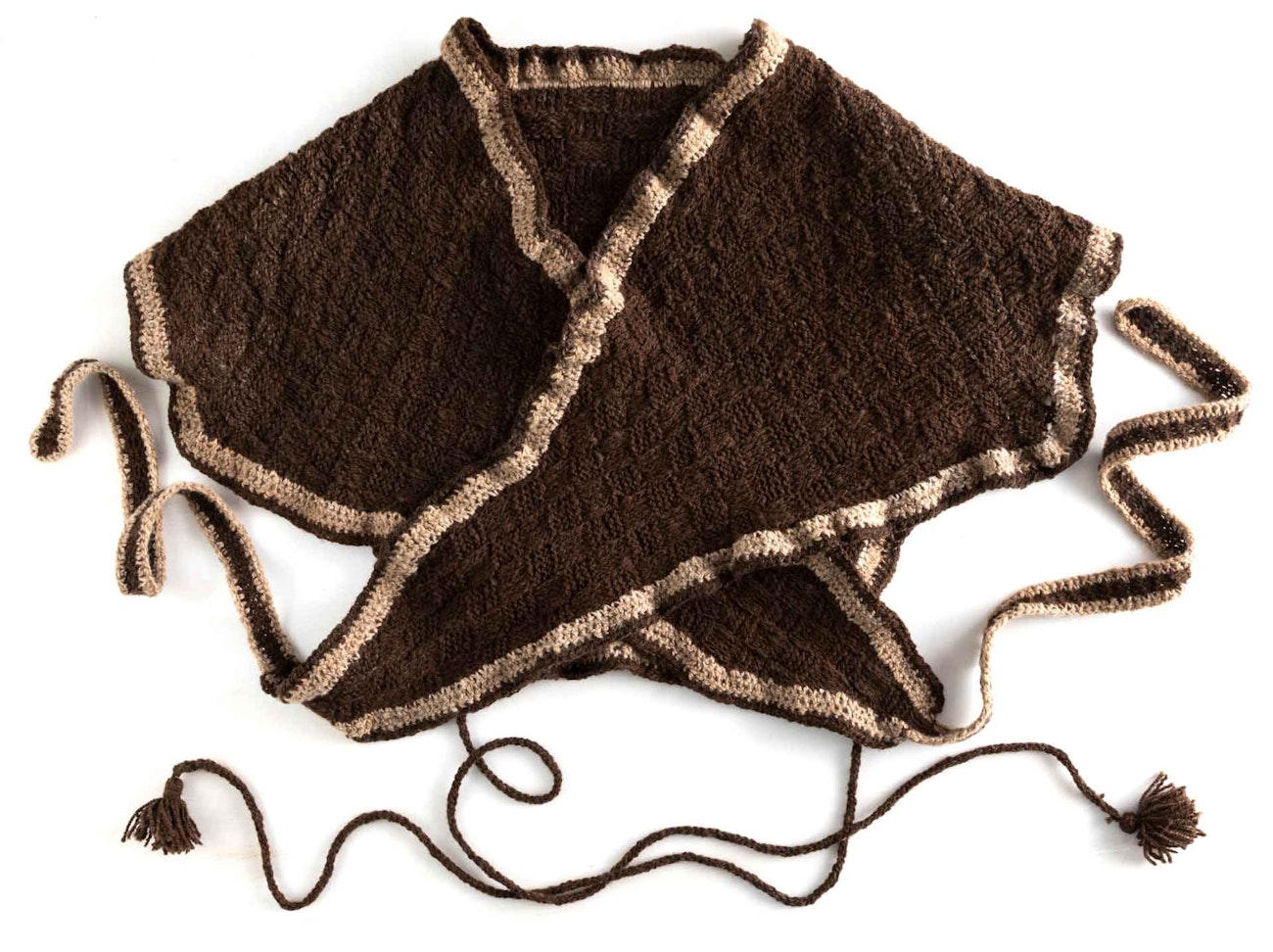
Denise’s sontag was inspired by a Godey’s pattern published in 1860.
Finishing
Edging
With CC and RS facing, beg on right front where tie meets last block, work 1 rnd of sc around entire piece. Fasten off.
With CC and RS facing, beg on right front where tie meets last block and working along neck edge, work 1 dc in each sc, ending where tie meets last block on left front. Fasten off.
With CC and RS facing, beg on left front where tie meets last block and working along outer edge, work 1 dc in each sc, ending where tie meets last block on right front. Fasten off.
With MC and RS facing, beg on right front 4 sc before first dc and working along neck edge, work [1 sc in each sc] 4 times, work 1 sc in each dc to end, then work [1 sc in each sc] 4 times. Fasten off.
With MC and RS facing, beg on left front 4 sc before first dc and working along outer edge, work [1 sc in each sc] 4 times, work 1 sc in each dc to end, then work [1 sc in each sc] 4 times. Fasten off.
Cords (make 2)
With MC, CO 3 sts. Work I-cord for 32". BO all sts.
Sew a cord to each point at lower back (beg and end of CO edge).
With MC, make two 2" tassels. Attach one tassel to end of each cord.
Weave in ends. Block.
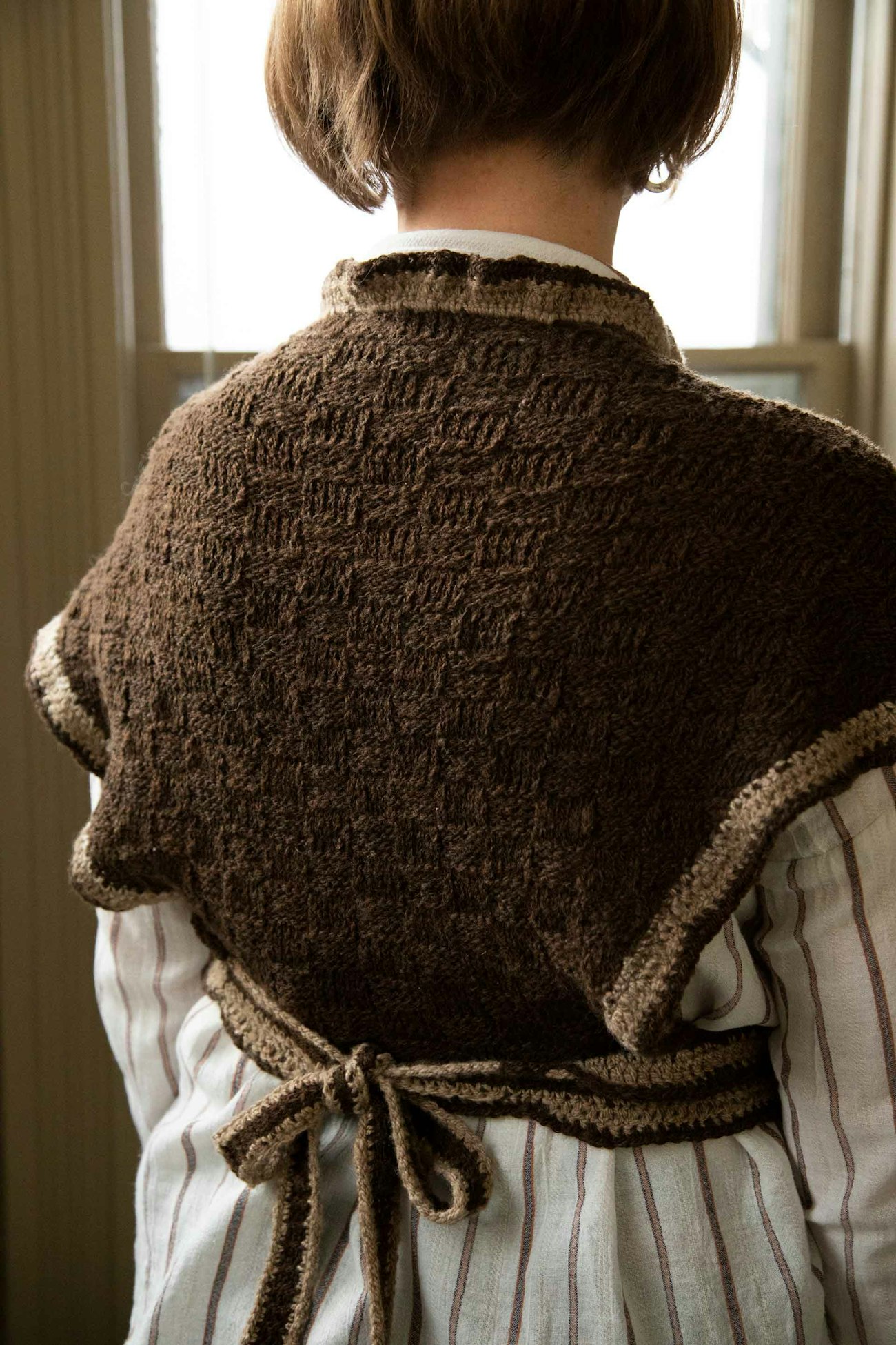
Sontags cross the body in the front and are secured in the back.
Denise Williams, a former schoolteacher, decided to live her dream and become a writer and artist. Her passion is processing and spinning fibers to knit, crochet, and weave. Denise chronicles her fiber adventures on her YouTube channel, Something Beautiful Handcrafts.
This project was published in the Summer 2020 issue of Spin Off.

